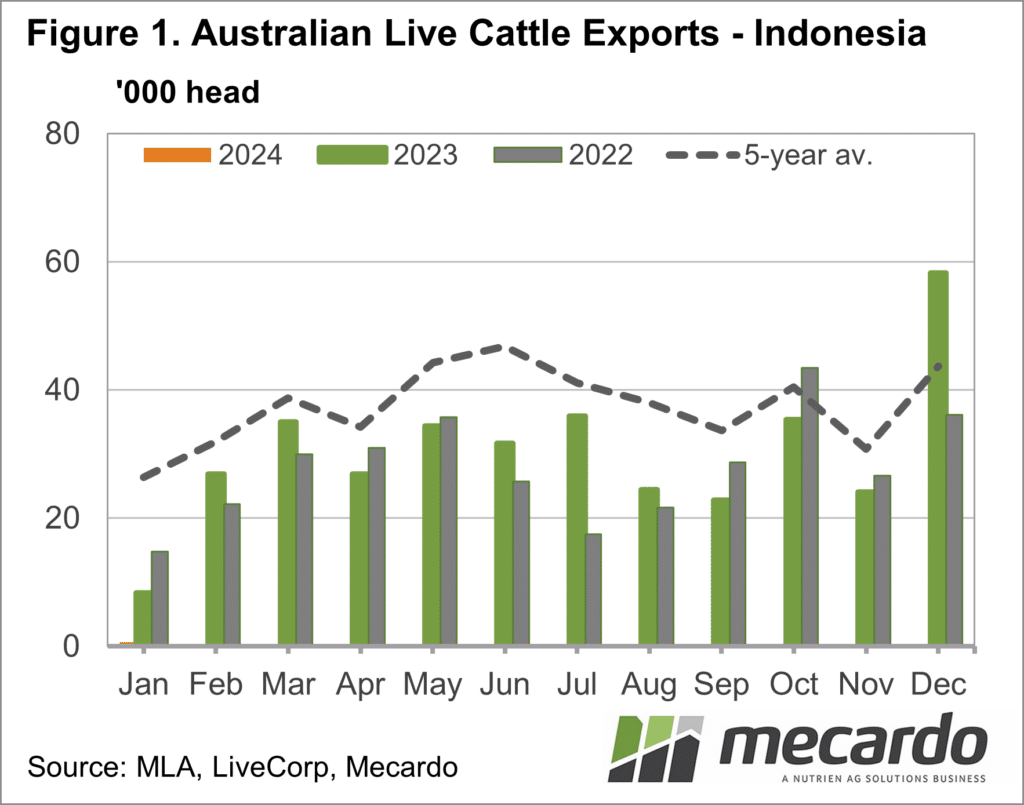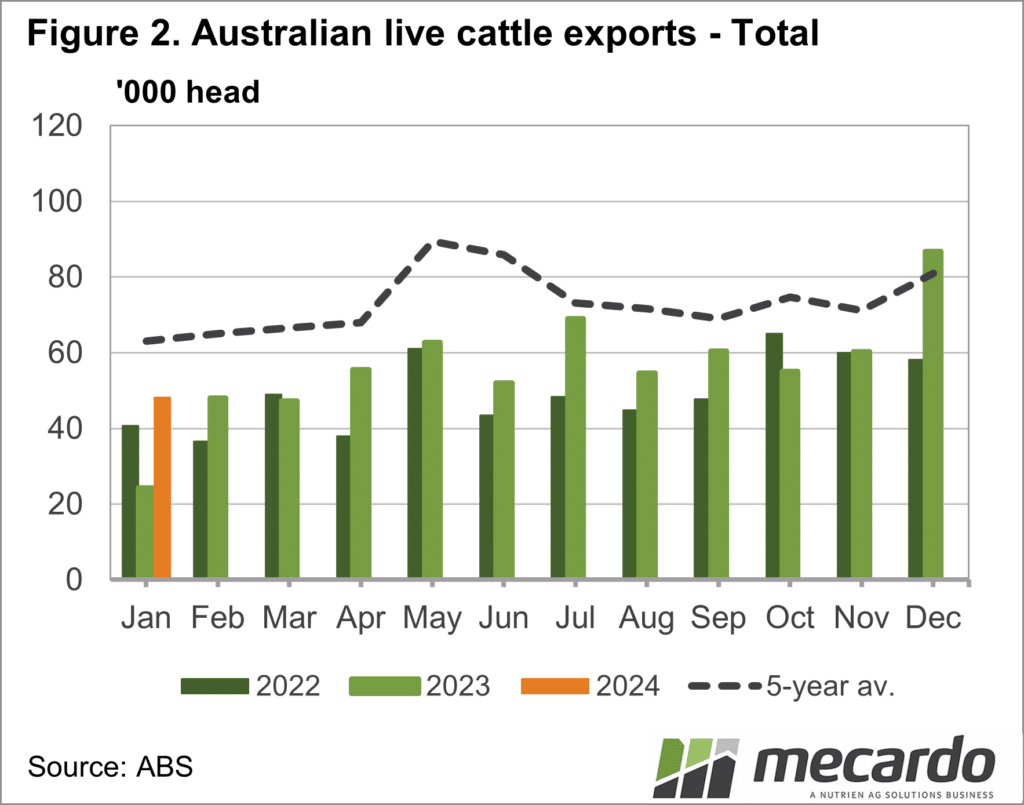For northern cattle producers, access to overseas markets for live cattle is pivotal to their operation. 2024 began with trade uncertainty which left the industry holding its breath on future trade with Indonesia. However to much relief, in recent days Indonesia issued the first permits allowing the import of live Australian cattle.
Indonesia is Australia’s top destination
for cattle. On average 52% of live export cattle have been sent to our northern
neighbours. In recent years the island nation (home to 275 million people), has
signed permits allowing 600k head or more cattle to be imported from Australia.
However Australian live cattle exporters have faced increased competition in
this market from both processed boxed beef and Buffalo meat. The start of 2024
saw Indonesian government officials delay putting pen to paper on the permits, with
only confirmation of an approved permit coming in late last week.
Total live cattle exports for the first
month of 2024 were down 24% on the five-year average with 48.2k head exported. However,
this was an increase of over 23k head compared to January 2023. After a busy
December, figures released by the Department of Agriculture Water &
Environment show that of this total, only 600 head were exported to Indonesia. On
average 23.6k head have been exported
live to Indonesia in January.
Volumes to other key destinations in
January did make up for some of the shortfall. Most notably the breeder market
into China reached 28.8k head imported for the month of Jan, a 343% increase on
the five-year average for January. This accounted for 60% of all cattle leaving
Australian shores in January. The number of cattle exported to Malaysia in
January while only small in comparative terms, was the largest monthly volume
to this market since mid-2022. For
feeder cattle, exports to Vietnam remain
below average levels but were up 49% year on year.
2023 was a challenging year for cattle live
exports with the total for the year down 23% on the five-year average to 676k
head. This was in part due to lacklustre demand from customers facing economic
challenges, increased competition, and biosecurity measures. The price
adjustment since the highs of 2021/22 has now made Australian cattle more
competitive into these markets.
What does it mean?
The signing of the Indonesian permit is a much-welcomed relief for northern producers and solid demand is anticipated ahead of religious festivals. Traditionally, volumes to Indonesia rise from January to peak in June. With total 2024 exports starting strong on last year, a solid wet season, and now Indonesia re-entering the market, this provides more optimism for demand in the year ahead. How flooding conditions impact the muster and cattle supply is yet to be seen.
Have any questions or comments?
Key Points
- Indonesia has renewed the permit for Australian live cattle exports
- Despite the absence of Indonesia, total January volumes were almost double those in January 2023.
- The demand outlook is improving, despite challenges from market competition.
Click on figure to expand
Click on figure to expand
Data sources: MLA, DAFF, Reuters, Mecardo














